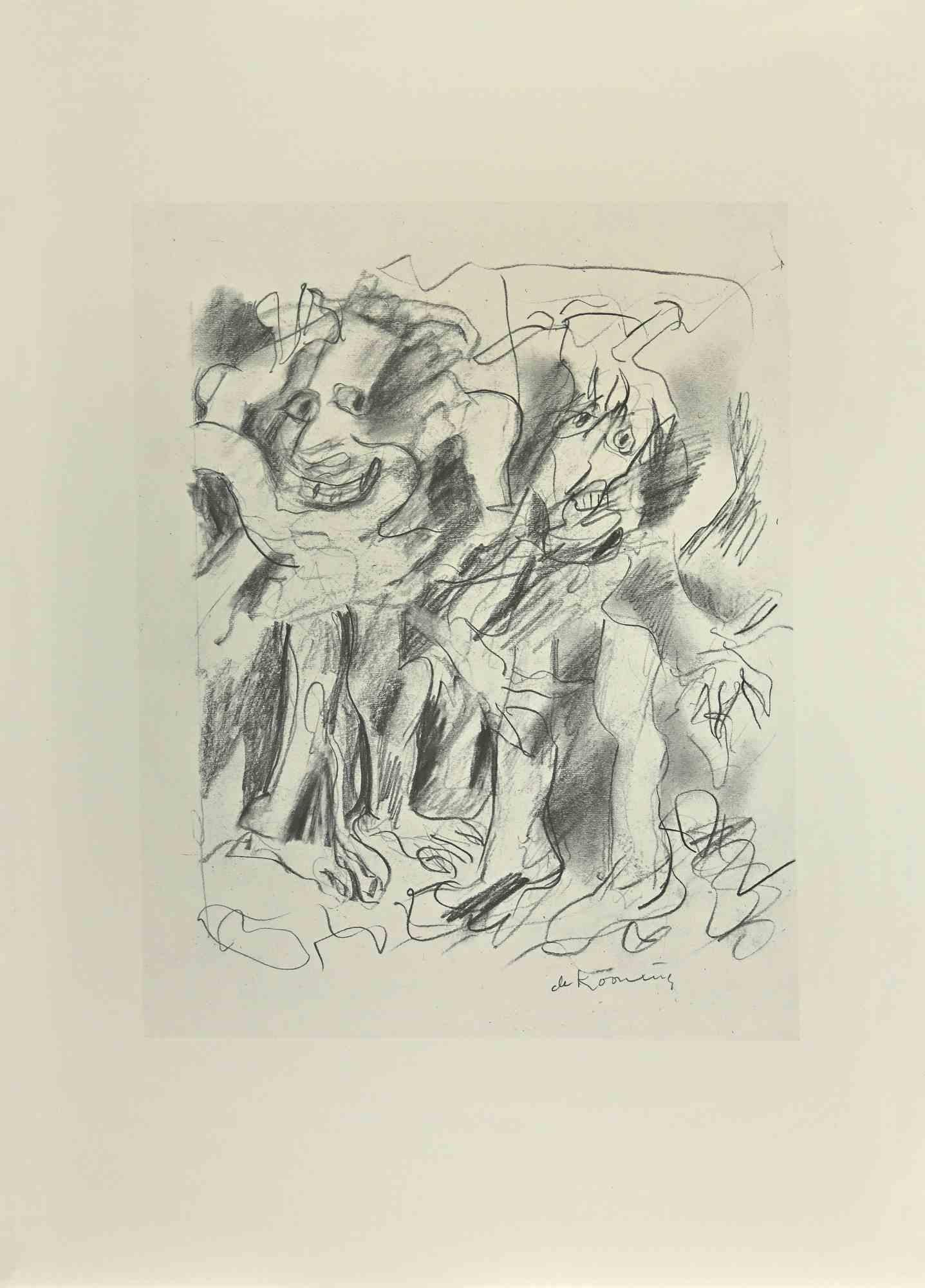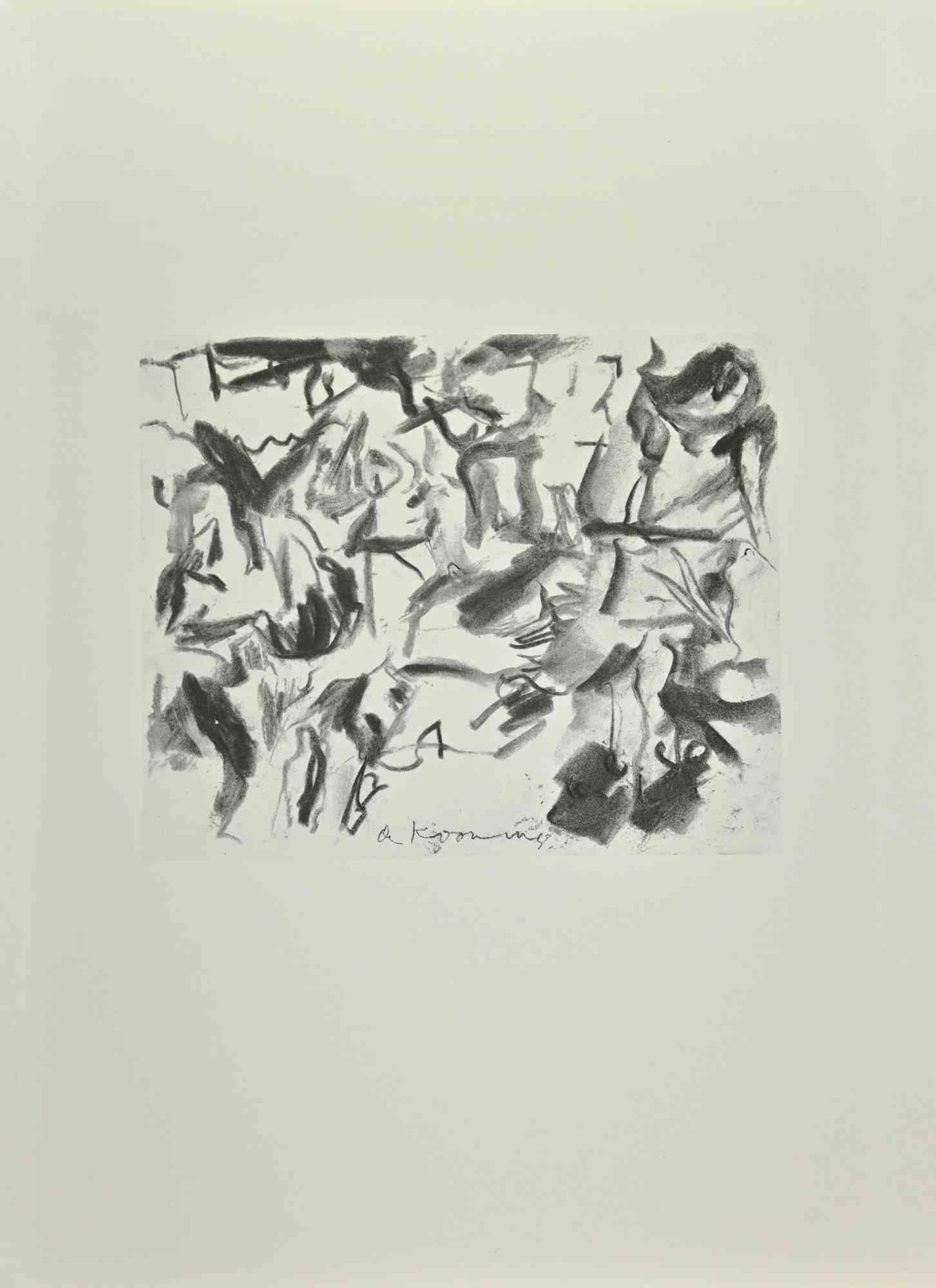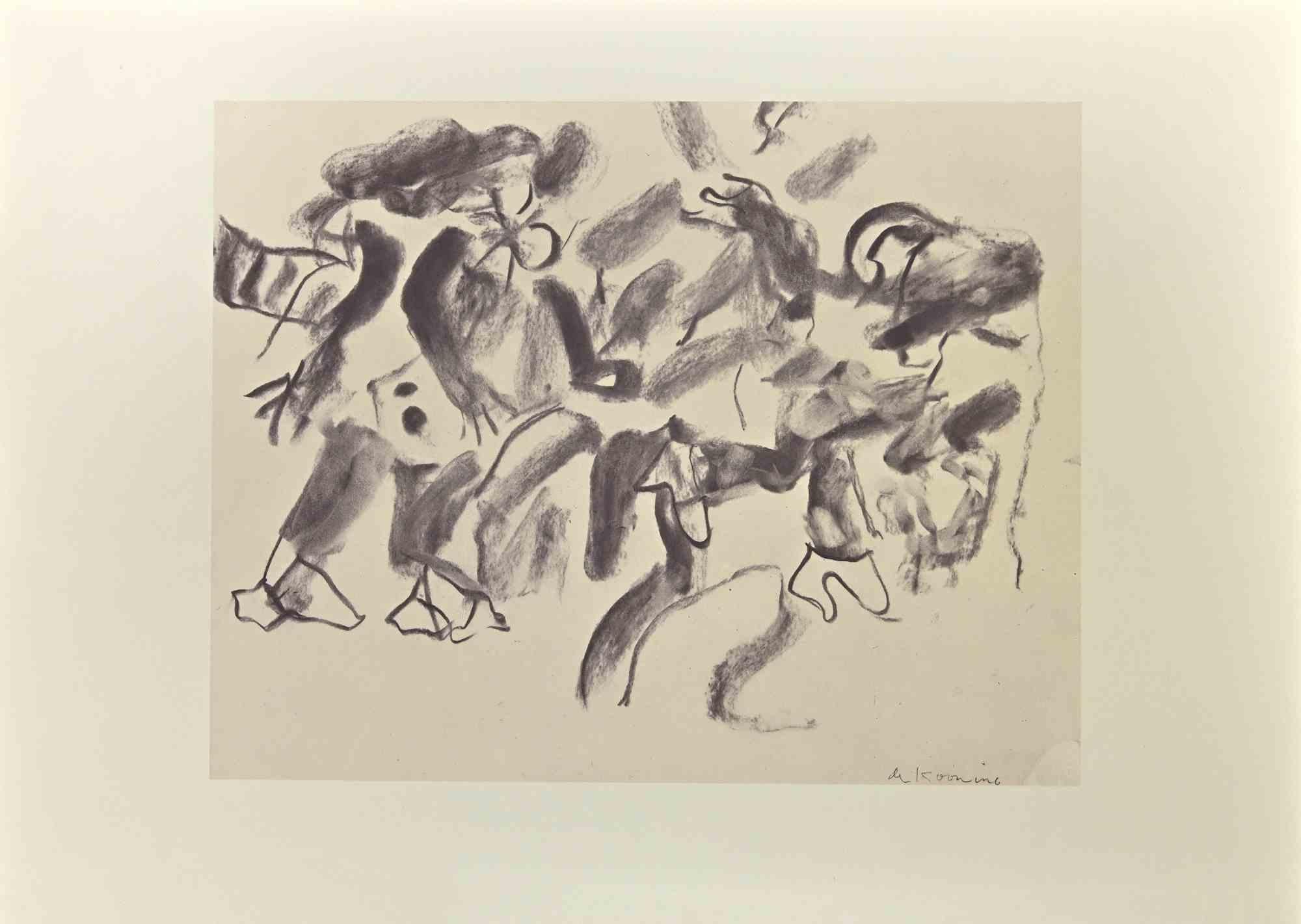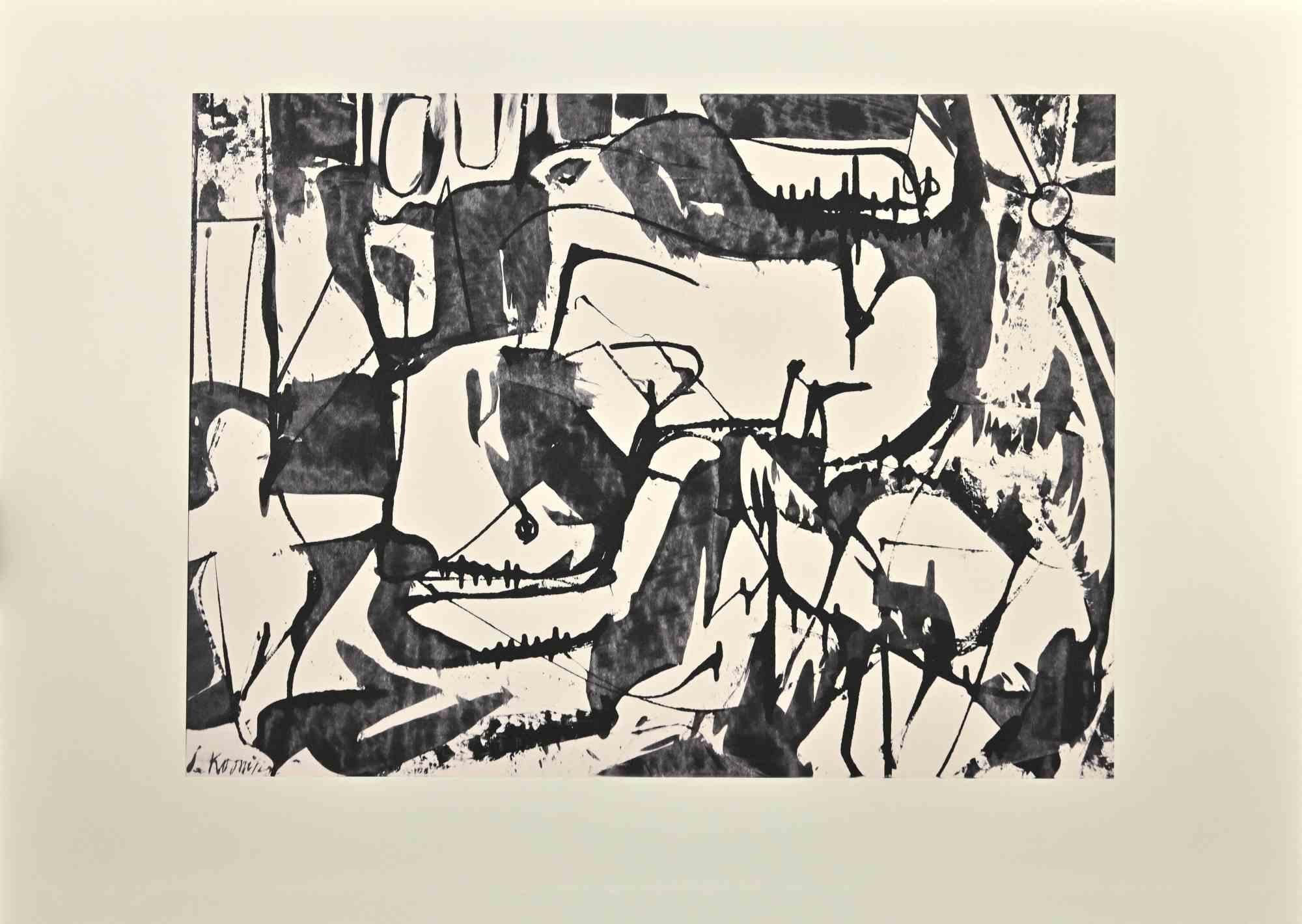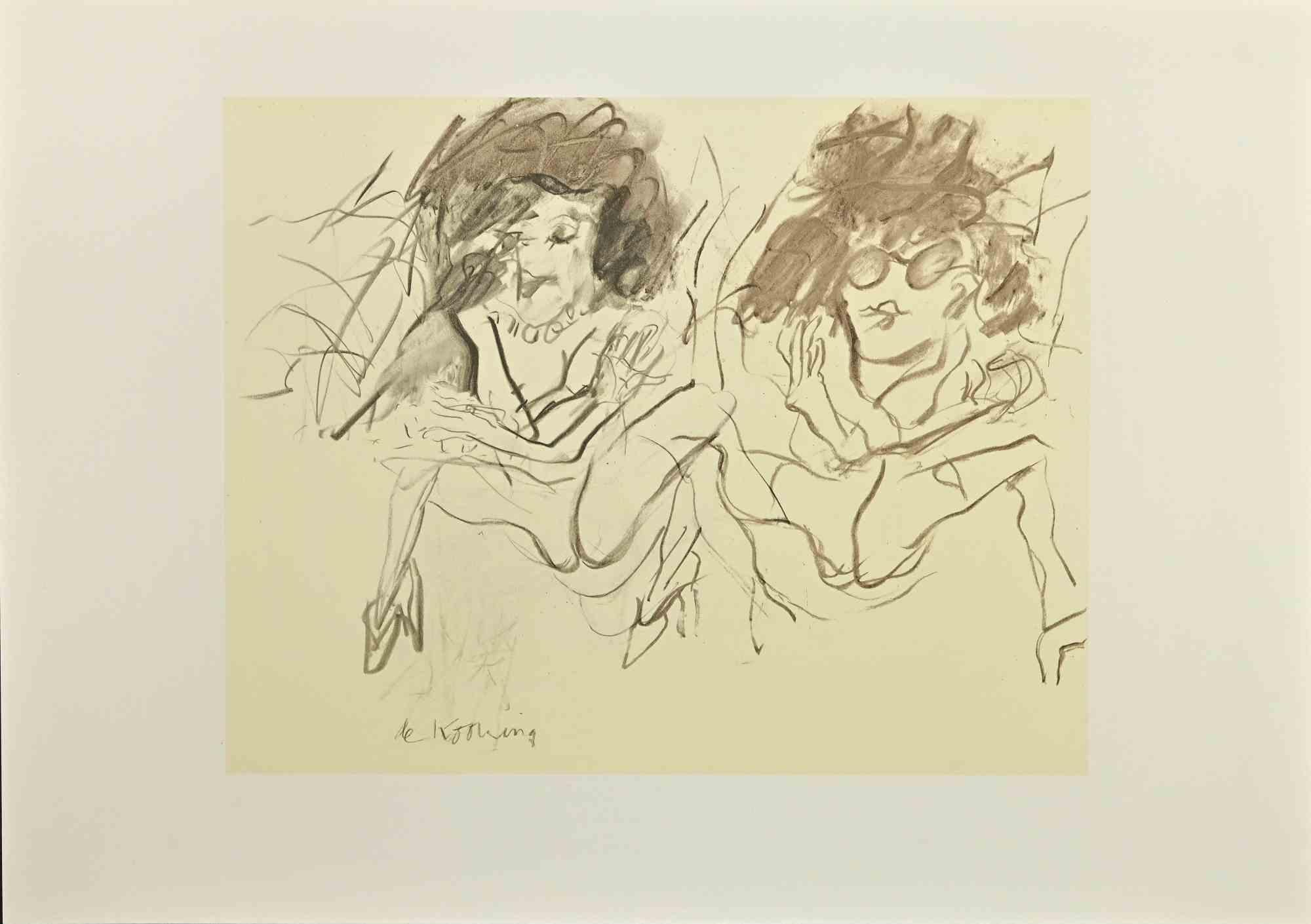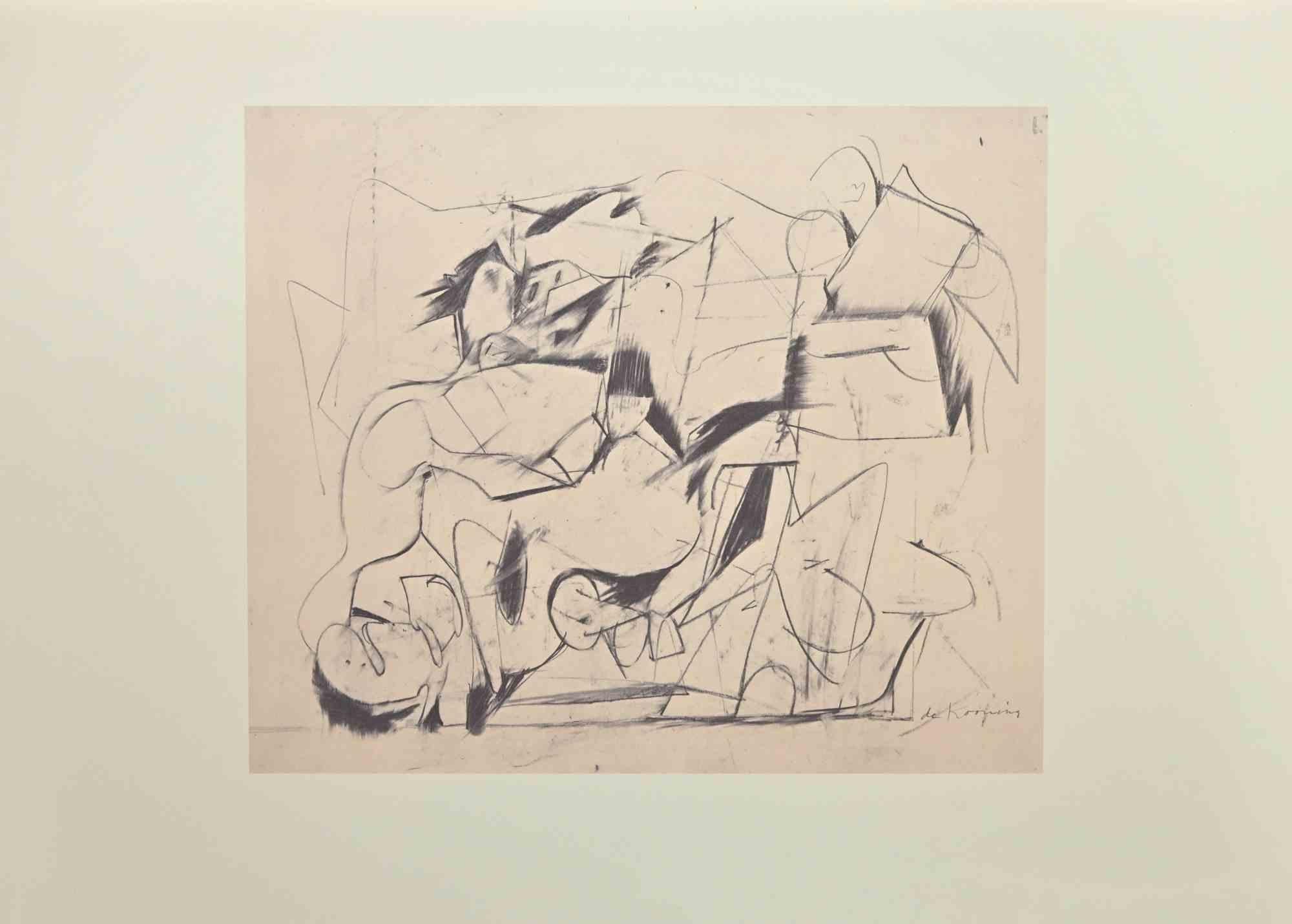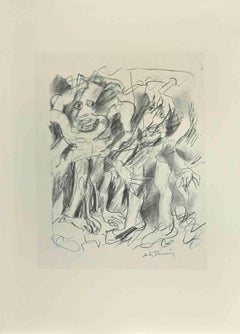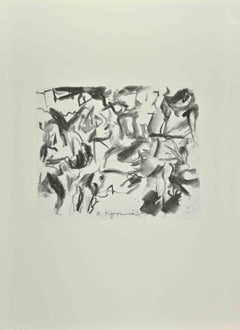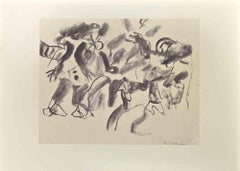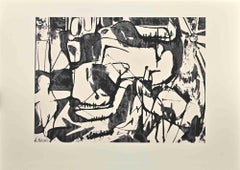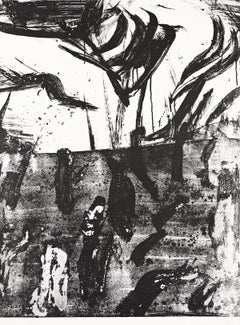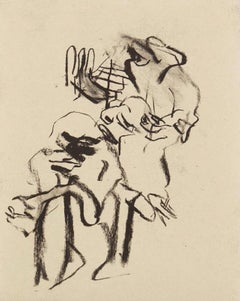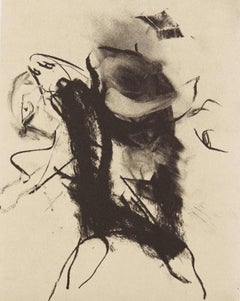Items Similar to Untitled - Offset and Lithograph after Willem De Kooning - 1985
Want more images or videos?
Request additional images or videos from the seller
1 of 6
Untitled - Offset and Lithograph after Willem De Kooning - 19851985
1985
$283.01
£215.18
€240
CA$397.01
A$433.77
CHF 228.14
MX$5,215.02
NOK 2,872.45
SEK 2,696.85
DKK 1,827.97
About the Item
Untitled is an offset and lithograph print realized on Fabriano Paper after a drawing by Willem De Kooning of 1984.
Signed in the plate on the lower.
The print suite was realized in a limited edition of 2500, and curated by Xavier Fourcade.
Very Good conditions.
Willem de Kooning (Rotterdam, April 24, 1904 - New York, March 19, 1997) was a Dutch-born American painter and sculptor. From 1926 he moved to the United States and during the tremendous years of the economic crisis he created frescoes on commission from the WPA Federal Art Project. During the Second World War, he became part of the group of abstract artists, formed around the numerous European emigrant painters. In 1948, with his first solo exhibition at the Egan Gallery, he established himself as one of the most prominent exponents of abstract expressionism. his artistic language matures in the context of abstract expressionism, becoming one of its most significant representatives. His canvases are the representation of a deforming and violent vision that abstracts external reality. Adherence to a realist matrix, however also found in those works where the informal appears absolute. In his artworks, the chaotic and violent lines tend to lose any definition of the structure, and new balances of relationships and harmonies of rhythm are born, constants through which he recovers the form and attributes new values to it. To this vision full of contradictions belongs the series of female images of the fifties and sixties, of dramatic and cruel reality, a constant theme of the artist.
- Creation Year:1985
- Dimensions:Height: 14.57 in (37 cm)Width: 20.48 in (52 cm)Depth: 0.04 in (1 mm)
- Medium:
- Movement & Style:
- After:Willem de Kooning (1904-1997, American, Dutch)
- Period:
- Framing:Framing Options Available
- Condition:Insurance may be requested by customers as additional service, contact us for more information.
- Gallery Location:Roma, IT
- Reference Number:Seller: T-1359691stDibs: LU650311335352
About the Seller
4.9
Platinum Seller
Premium sellers with a 4.7+ rating and 24-hour response times
1stDibs seller since 2017
7,790 sales on 1stDibs
Typical response time: 1 hour
- ShippingRetrieving quote...Shipping from: Roma, Italy
- Return Policy
Authenticity Guarantee
In the unlikely event there’s an issue with an item’s authenticity, contact us within 1 year for a full refund. DetailsMoney-Back Guarantee
If your item is not as described, is damaged in transit, or does not arrive, contact us within 7 days for a full refund. Details24-Hour Cancellation
You have a 24-hour grace period in which to reconsider your purchase, with no questions asked.Vetted Professional Sellers
Our world-class sellers must adhere to strict standards for service and quality, maintaining the integrity of our listings.Price-Match Guarantee
If you find that a seller listed the same item for a lower price elsewhere, we’ll match it.Trusted Global Delivery
Our best-in-class carrier network provides specialized shipping options worldwide, including custom delivery.More From This Seller
View AllUntitled - Offset and Lithograph after Willem De Kooning - 1985
By Willem de Kooning
Located in Roma, IT
Untitled is an offset and lithograph print realized on Fabriano Paper after a drawing by Willem De Kooning of 1975.
Signed o the plate on the lower.
The print suite was realized i...
Category
1980s Abstract Expressionist Abstract Prints
Materials
Lithograph, Offset
Untitled - Offset and Lithograph after Willem De Kooning - 1985
By Willem de Kooning
Located in Roma, IT
Untitled is an offset and lithograph print realized on Fabriano Paper after a drawing by Willem De Kooning of 1980.
The print suite was realized in 1985 in a limited edition of 2500...
Category
1980s Abstract Expressionist Abstract Prints
Materials
Lithograph, Offset
Untitled - Offset and Lithograph after Willem De Kooning - 1985
By Willem de Kooning
Located in Roma, IT
Untitled is an offset and lithograph print realized on Fabriano Paper after a drawing by Willem De Kooning of 1975.
Signed o the plate on the lower.
The print suite was realized i...
Category
1970s Abstract Expressionist Abstract Prints
Materials
Lithograph, Offset
Untitled- Offset and Lithograph after Willem De Kooning - 1985
By Willem de Kooning
Located in Roma, IT
Untitled is an offset and lithograph print realized on Fabriano Paper after a drawing by Willem De Kooning of 1950.
The print suite was realized in 1985 in a limited edition of 2500...
Category
1980s Abstract Expressionist Abstract Prints
Materials
Lithograph, Offset
Untitled- Offset and Lithograph after Willem De Kooning - 1985
By Willem de Kooning
Located in Roma, IT
Untitled is an offset and lithograph print realized on Fabriano Paper after a drawing by Willem De Kooning of 1968.
The print suite was realized in 1985 in a limited edition of 2500...
Category
1980s Abstract Expressionist More Prints
Materials
Lithograph, Offset
Untitled- Offset and Lithograph after Willem De Kooning - 1985
By Willem de Kooning
Located in Roma, IT
Untitled is an offset and lithograph print realized on Fabriano Paper after a drawing by Willem De Kooning 1950.
The print suite was realized in 1985 in a limited edition of 2500, a...
Category
1980s Abstract Expressionist Abstract Prints
Materials
Lithograph, Offset
You May Also Like
Untitled (Litho #7)
By Willem de Kooning
Located in New York, NY
A very good impression of this scarce and early lithograph on Arches. Edition of 50. Printed at Hollander's Workshop, Inc., New York, with the blind stamp lower right.
Provenance: ...
Category
1960s Abstract Expressionist Abstract Prints
Materials
Lithograph
Willem de Kooning rare 1970s Abstract Expressionist lithograph, pencil signed/N
By Willem de Kooning
Located in New York, NY
Willem de Kooning
Annual Spring Invitational Art Exhibition (limited edition, hand signed & numbered by Willem de Kooning), 1979
Offset lithograph (hand signed and numbered)
Signed a...
Category
1970s Abstract Expressionist Abstract Prints
Materials
Lithograph, Offset
Willem de Kooning, Untitled, from Poems, 1988
By Willem de Kooning
Located in Southampton, NY
This exquisite lithograph by Willem de Kooning (1904–1997), titled Untitled, from the folio Poems, originates from the 1988 edition published by The Limited Editions Club, New York, ...
Category
1980s Abstract Expressionist Abstract Prints
Materials
Lithograph
$7,996 Sale Price
20% Off
Free Shipping
Willem de Kooning, Untitled, from Poems, 1988
By Willem de Kooning
Located in Southampton, NY
This exquisite lithograph by Willem de Kooning (1904–1997), titled Untitled, from the folio Poems, originates from the 1988 edition published by The Limited Editions Club, New York, ...
Category
1980s Abstract Expressionist Abstract Prints
Materials
Lithograph
$7,996 Sale Price
20% Off
Free Shipping
Willem de Kooning, Untitled, from Poems, 1988
By Willem de Kooning
Located in Southampton, NY
This exquisite lithograph by Willem de Kooning (1904–1997), titled Untitled, from the folio Poems, originates from the 1988 edition published by The Limited Editions Club, New York, ...
Category
1980s Abstract Expressionist Abstract Prints
Materials
Lithograph
$7,996 Sale Price
20% Off
Free Shipping
Willem de Kooning, Untitled, from Poems, 1988
By Willem de Kooning
Located in Southampton, NY
This exquisite lithograph by Willem de Kooning (1904–1997), titled Untitled, from the folio Poems, originates from the 1988 edition published by The Limited Editions Club, New York, ...
Category
1980s Abstract Expressionist Abstract Prints
Materials
Lithograph
$7,996 Sale Price
20% Off
Free Shipping
More Ways To Browse
Jasper Johns Signed Prints
Kabbalah Painting
Life Size Vintage Dolls
Miro Book
Miro Numbered Lithograph
Morris Anderson
R Allen
Willem de Kooning On Sale
Winifred Nicholson
1940s Lithograph
Albers Variant
Art Blue Heron
Fine Art Miro
Georges Braque Oiseaux
Israeli Pop Art
Jasper Johns Poster
Joan Miro 1961
Luigi Palumbo
